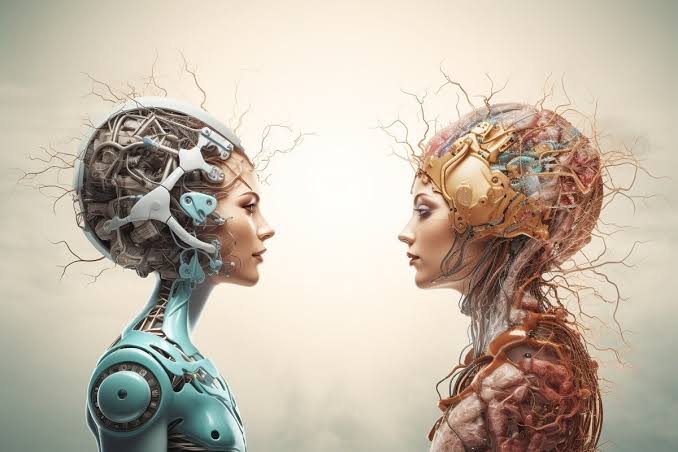The Psychology of AI Art: Understanding Human Perception
Explore the psychology behind AI art and how it affects human perception. This in-depth analysis examines the nature of creativity, the role of intent, and the impact of context on the appreciation of art generated by artificial intelligence. Discover how AI art challenges traditional notions of authenticity and value, and what it reveals about our evolving relationship with technology.
AI Artwork | September 5, 2024
Explore the psychology behind AI art and how it affects human perception. This in-depth analysis examines the nature of creativity, the role of intent, and the impact of context on the appreciation of art generated by artificial intelligence. Discover how AI art challenges traditional notions of authenticity and value, and what it reveals about our evolving relationship with technology.
The Study of AI Art's Impact on Human Perception
Introduction
Artificial Intelligence (AI) is making its way into parts of our lives from handling tasks to producing artwork. The rise of AI generated art has stirred up both intrigue and debate. To grasp the significance of AI art it's important to delve into the psychology behind how humans perceive these creations. This examination unveils how we understand and assign value to machine made art and what it says about our cognitive and emotional responses.
The Nature of Art and Creativity
Throughout history art has been seen as a pursuit exclusive to humans a way to convey feelings, ideas and life moments. The act of creating is often linked to traits like purpose, creativity and self awareness. When AI algorithms produce artwork they rely on programming and data rather than having emotions or personal connections. This prompts discussions about what defines creativity and whether AI can truly be regarded as an artist. Some argue that art lacks the richness of human experiences while others suggest that creativity can be seen as a process of recognizing and combining patterns something AI excels at.
The Role of Intent and Interpretation
Understanding the significance of intention is crucial, in art appreciation. Artists infuse their creations with significance and purpose that audiences can recognize and interpret. In the realm of AI generated art the lack of intent adds complexity to this relationship. Yet human observers may impose their interpretations onto AI art assigning meaning where there is none. This interpretation is shaped by the context surrounding the artwork and the viewers state. For example an AI generated painting may elicit similar emotional reactions as one crafted by a human artist despite differing processes.
The Aesthetic Experience
The enjoyment of art is rooted, in the experience it offers. This includes the emotions and thoughts sparked by a piece of artwork. Studies in psychology indicate that encounters with beauty can be shaped by factors such as visual intricacy, balance and uniqueness. Art generated by intelligence can showcase complexity and novelty often resulting in eye catching and unconventional creations. These can evoke reactions similar to those evoked by art. However some individuals may perceive AI generated art as lacking the genuineness found in creations which could impact their overall appreciation and pleasure.
Perception of Authenticity
The value and appreciation of art heavily depend, on its authenticity. Art created by humans is often seen as a reflection of the artists experiences, feelings and intentions. On the hand AI generated art may be viewed as lacking authenticity due to its nature. This perception can impact how audiences respond to AI generated pieces. For instance people might consider AI art to be less meaningful or impactful compared, to artwork. This viewpoint underscores a broader debate, in art criticism regarding the influence of the process on the worth and interpretation of a piece.
The Influence of Context
The way art is displayed impacts how it is seen. When AI created art is shown in settings like galleries or museums it can be judged by standards. However the uniqueness of AI as an artist may also bring about ways to assess its work. For example conversations about AI art might revolve around advancements and the ethical considerations of creativity. This contextual perspective can shape how audiences view and appreciate AI generated pieces.
Emotional Responses and Cognitive Biases
Our reactions, to art are influenced by workings. AI generated art can stir up emotions just like art made by humans. However when judging AI art our biases might come into play. For example the "mere exposure effect" shows that people tend to like things they see often. As AI art becomes common people may grow used to and open minded about it changing how they view it over time.
The Future of AI Art
The changing world of AI art raises questions, about the future of creativity and artistic expression. With advancements in AI technology we may see more complex and varied creations. This could challenge ideas about art and creativity sparking conversations, on the role of machines in creative industries. The incorporation of AI into the realm of art might prompt a reassessment of what defines value and genuineness.
Conclusion
The study of AI art psychology showcases the interplay, between how we see things react emotionally and think. While AI created art pushes the boundaries of what we consider creativity and genuineness it also paves the way, for new artistic journeys and interpretations. Exploring our perception and appreciation of AI art sheds light on questions about the essence of art and the changing dynamics between humans and technology. With AIs growing impact on the art scene our viewpoints are sure to evolve reshaping the limits, of creativity.
